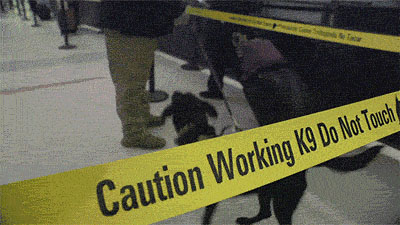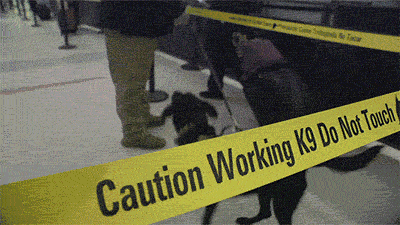Determining how risky you are
As soon as you reserve your seat on a flight, TSA will start to compile your “risk profile,” not based on racial or religious profiling, but based on behavior, including where you’ve traveled previously. If you’re enrolled in TSA PreCheck, your risk profile will be lower. “The more we know about you, the less we have to touch you and your stuff,” says the agency’s administrator.
Status: Being piloted
What’s the traffic situation?


TSA officials hold a conference call every morning with leaders from the nation’s biggest airports to try to anticipate travel spikes before they turn into huge headaches. The agency sometimes moves teams of screeners from one airport to another to meet demand.
Status: Happening now
Bring in the dogs


As you get in line at a security checkpoint, you may find yourself passing a K-9 unit. With this setup, “standard” lines are treated like PreCheck, meaning you can keep your shoes on. That’s assuming a trained dog detects no explosives after getting two sniffs of your bag.
Status: Happening now
ID, no boarding pass


When you get to the front of the line, you’ll feed your driver’s license or passport into a reader that’s connected to the Secure Flight database. That will be used to verify that you’re who you say you are. Down the line, you’ll skip that step and submit to some form of biometric identification. This will replace the current step where a TSA officer reviews your license and scribbles on your boarding pass.
Status: Next priority
Moving through checkpoints more quickly


Instead of getting stuck behind slowpokes (or cranky children) in the X-ray line, new “automated screening lanes” offer five or six stations where you and other travelers can each fill bins at the same time. The bins move on an automated belt instead of relying on you to push them along and will soon have radio frequency ID tags that tie the bag to you.
Status: Being piloted
Keep it moving


When it comes to having your body scanned, instead of holding your hands up while standing in a glass booth, you’ll stand for a second or two between open-air panels.
Status: Next priority
Getting on board
Once you arrive at the gate for your flight, instead of digging out your boarding pass, you’ll use a thumbprint, an iris scan, or another form of biometrics to board the plane.
Status: A ways off
